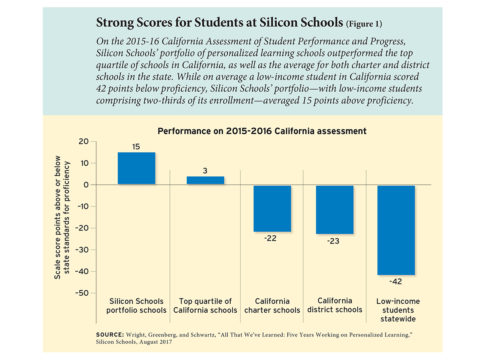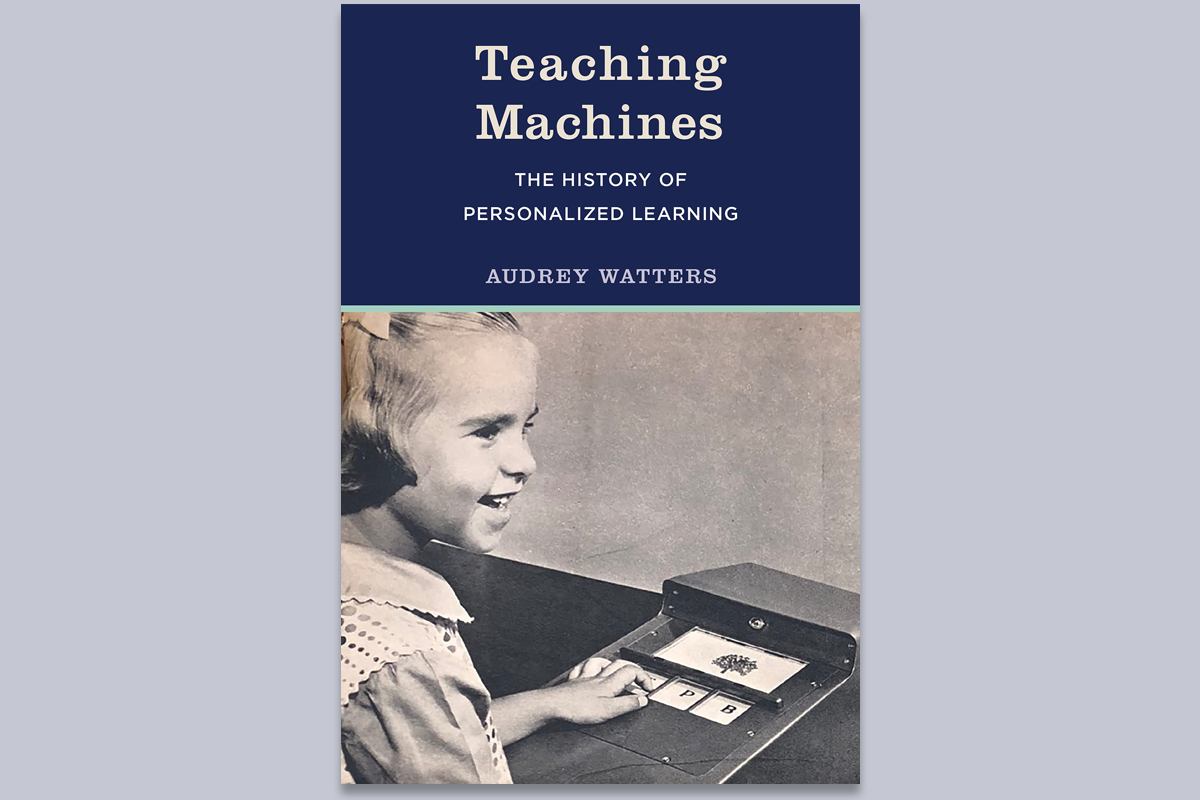
If the first decade of the 21st century was dominated by talk of standards and accountability in K-12 education reform, then the 2010s were all about “innovation.”
It permeated the education zeitgeist, from the federal Investing in Innovation Fund to efforts to harness new technology and personalize student experiences. And it served as a shiny new foundation for repackaged approaches to reform like project-based learning, career and technical education, and school choice.
Now, just as corporations and colleges and universities have done before them, school districts are reflecting the innovation buzz by adding a new position to their leadership ranks: the chief innovation officer, or CIO. In school districts as in the corporate and higher-education sectors, it’s unclear whether adding a CIO represents a serious commitment to innovation or, rather, window dressing to promote a cutting-edge appearance.
Chief Innovation Officers on Campus
Spotting a CIO is easier than defining what he or she might do. Many organizations have one, but the job descriptions vary widely. So do the duties, which can range from managing the process of innovation inside an organization to ushering in an agenda of change management more broadly, and from generating innovative ideas to spotting and spotlighting innovative ideas from others. The role appears to have originated in the 1999 book by William L. Miller and Langdon Morris, Fourth Generation R&D, itself a product of helping companies manage the “hypercompetitive” era of the 1990s and the dot-com bubble.
Higher education institutions have been hiring people with the CIO title for about a decade; according to a report by Russell Reynolds Associates, in 2017, 20 to 30 percent of the top 50 universities had someone in a role akin to the chief innovation officer. In a January 2018 report titled “The Rise of the Chief Innovation Officer in Higher Education,” Jeff Selingo wrote that more than 200 colleges and universities had senior roles with either the explicit title of chief innovation officer or something similar—and another 200 had online-learning roles “connected to broader academic efforts.” (Entangled Solutions, where we both are partners, published Selingo’s report.)
According to Selingo, the “roles and responsibilities of innovation jobs are as diverse as the institutions and the people who hold the position,” but he divided them into three main categories:
- The leader of an autonomous innovation project or entity separate from the rest of the university (sometimes called a “skunkworks”);
- The head of an internal consultancy available to assist existing departments with innovating;
- Or someone, often in the provost’s office, charged with infusing innovation into the broader culture alongside other responsibilities.
Colleges and universities began hiring for the role in the aftermath of the Great Recession of 2008, Selingo wrote, when schools were looking to use technology to cut costs. After the rise of massive open online courses in 2011, campuses scrambled to hire more CIOs and fill other innovation-related jobs to help rethink everything from business models to teaching.
Tracking the Rise of “Innovation” and CIOs
The rise in public discussion of innovation in K–12 education has been dramatic. Beginning in 2008, educators began focusing more on innovation, at least partially as a way to push back against the focus on standards, accountability, and standardization.
We conducted a quick inventory of major news sources over the last decade to get a rough sense of the scope of the change. A LexisNexis search of the 10 largest newspapers in the United States found nearly 8,000 articles that mentioned “education” and “innovation” from 2009 to 2019—almost double the previous decade’s total of 4,400 articles. During those same periods, the number of articles that mentioned “education” and “accountability” declined to about 8,000 from about 11,000.
By contrast, the arrival of chief innovation officers in school districts has been more muted. According to our research, the role is growing but remains confined to a small number of districts. We were able to find 45 chief innovation officer positions—or those with the equivalent moniker—in school districts today. That is a tenfold increase from 2013 but still represents a tiny fraction of even very large districts across the United States, some 500 of which have more than 14,000 students. Organizations are gearing up to train more, such as associations like the California Association of School Business Officials, which now offers a CIO-certification program.
Just as in higher education, the job spans a wide range of functions. One way to categorize the different roles that CIOs play is that some focus on systemic initiatives across a district, while others support individual teachers in classrooms as they attempt to innovate and improve.
Even within those contours, there are other significant differences. Some chief innovation officers focus on broad strategic planning with an emphasis on change management, establishing strategic partnerships, and using data to inform current and future needs. Others are tasked with integrating technology or leading implementation of school choice initiatives.
Sometimes the role is focused specifically on addressing longstanding priorities in a new way. For example, when Ventura Unified School District in California added a chief innovation officer last year, the district explained the role’s priorities as “promoting new and compelling career education programs and pathways, fostering innovation across the district and programs, and raising funds through grant-writing and business partnerships,” according to the Ventura Star. In North Carolina, Guilford County Schools added a CIO to examine instructional models across its schools. Detroit Public Schools have had their CIOs focus on college preparedness, enhancing career and technology education, and strengthening philanthropic partnerships.
Given the wide range of responsibilities CIOs have in districts, one real worry is that the role becomes “innoganda,” or glorified propaganda around innovation, a term coined by Scott Anthony of Innosight, a tech-minded business consultancy. The basic notion is that it’s easy to copy artifacts of what organizations see as being “innovative” from other groups they admire—think free lunches or open-office floor plans. It’s much harder to instill the actual practices and day-to-day behaviors that lead to true innovation.
Harder still is the challenge of translating isolated initiatives into a deeper culture of innovation that drives an enduring focus on what’s best for students and educators. Challenging conditions such as leadership turnover, fiscal pressures, or lack of organizational goal alignment can create formidable obstacles to fostering an ongoing culture of innovation. District leaders developing their approach to innovation—whether donning the CIO title or not—would do well to heed the wisdom of the adage “culture eats strategy for breakfast.”
A “Lone Star” CIO
Existing organizations have well-known challenges in implementing innovations that break the mold of business as usual, unless they set up autonomous units capable of redefining an organization’s capabilities and priorities. School districts can be especially prone to organizational stasis, where tradition rules the day. The question is, do district CIOs have the power they need to implement breakthrough or disruptive ideas?
CIOs are playing meaty roles in some districts. In the San Antonio Independent School District in Texas, Mohammed Choudhury has risen to be perhaps the most prominent example. He oversees a broad team that includes the district’s innovation zone—20 schools that are located across the district, span all grade levels, and include neighborhood schools and open-enrollment campuses without attendance boundaries. His 10-person office leads the district’s Annual Call for Quality Schools, which invites educators to propose ways to redesign existing public schools and develop new school models.
His most visible charge has been to promote new schools of choice that are diverse by design, to intentionally serve a more demographically representative set of students from San Antonio and its surroundings—including students from wealthier communities outside the urban district. School themes such as “inquiry-based learning, Dual Language programs, and the Montessori school model,” are intended to attract families across the income distribution, he said in an interview with the Center for Reinventing Public Education.
The district has set aside one in four seats for students from low-income neighborhoods identified as especially high-needs, with busing and a unified-enrollment system to help balance student enrollment at each school. In essence, the assumption is that San Antonio can break the hold of school segregation not by mandating integration but by creating highly sought-after school options that a diverse set of families actively choose. It’s a big bet on innovation and design.
It’s also one he has some experience with from his time as the Director of Transformation and Innovation at the Dallas Independent School District. When Choudhury added an International Baccalaureate program to a Dallas school that had long served a predominately low-income student population, the percentage of poor students soon declined from more than 75 percent to the low 60s, he noted in an interview with Bellwether Education Partners. The district then instituted enrollment rules to ensure that low-income students would continue to account for at least 50 percent of the school, he said.
“We had to decide if we let gentrification take over and watch the school makeup become more affluent because of housing policies that contribute to segregation,” he said, “or if we freeze it to allow the disadvantaged families who are being displaced from their neighborhood maintain access to that opportunity now that it has become high quality.”
Whatever direction districts take with CIOs, one thing is clear: they will continue to have a variety of roles depending on the local context. Some will be substantial, while others will be more superficial. It’s also a safe bet that people with different titles will play the same functional role as CIOs, and that innovation may not need a chief innovator to thrive. But if adding an official innovation leadership job gives districts more capacity to be strategic in their visions for their futures, rather than reacting to the latest dictates and educational trends, then regardless of its faddish nature, perhaps there’s hope for its utility.
Michael Horn is cofounder of the Clayton Christensen Institute for Disruptive Innovation, senior partner at Entangled Solutions, and an executive editor of Education Next. Sam Olivieri is a partner at Entangled Solutions.
This article appeared in the Summer 2020 issue of Education Next. Suggested citation format:
Horn, M.B., Olivieri, S. (2020). Now Trending: Chief Innovation Officers – New titles abound, but with limited evidence of real change. Education Next, 20(3), 82-83.





